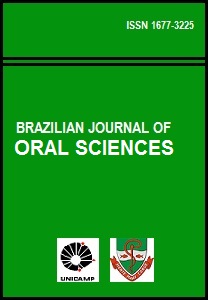Abstract
Aim: To evaluate, in vitro, the effect of an oral antihistamine liquid formulation on roughness and topography of bovine enamel and the influence of exposure time on its erosive effect. Methods: Forty-one bovine enamel blocks were prepared leaving an exposed window of 0.8 mm2 . Thirtynine blocks were divided into three treatment groups according to media immersion: antihistamine formulation (Histamin®), 0.6% citric acid (positive control), and distilled water (negative control). Before immersion of the samples, pH, titratable acidity, calcium, phosphate and fluoride contents of all media were verified. Enamel roughness was evaluated at baseline, and after 5, 15, and 30 min of immersion (9 samples per group). Two specimens from each group and exposure time, and 2 additional specimens representing baseline, were analyzed by scanning electron microscopy (SEM). Data were analyzed by the Kruskal-Wallis test, and the Mann-Whitney test using the Bonferroni correction (α=0.017). Results: Specimens immersed in citric acid showed the highest roughness (P<.001). SEM images showed a progressive erosion pattern in samples immersed in citric acid and in antihistamine formulation. Conclusions: The antihistamine liquid formulation did not promote significant alterations of enamel roughness. Nevertheless, SEM demonstrated that the antihistamine eroded bovine enamel, and the erosion pattern was influenced by exposure time.The Brazilian Journal of Oral Sciences uses the Creative Commons license (CC), thus preserving the integrity of the articles in an open access environment.
Downloads
Download data is not yet available.

